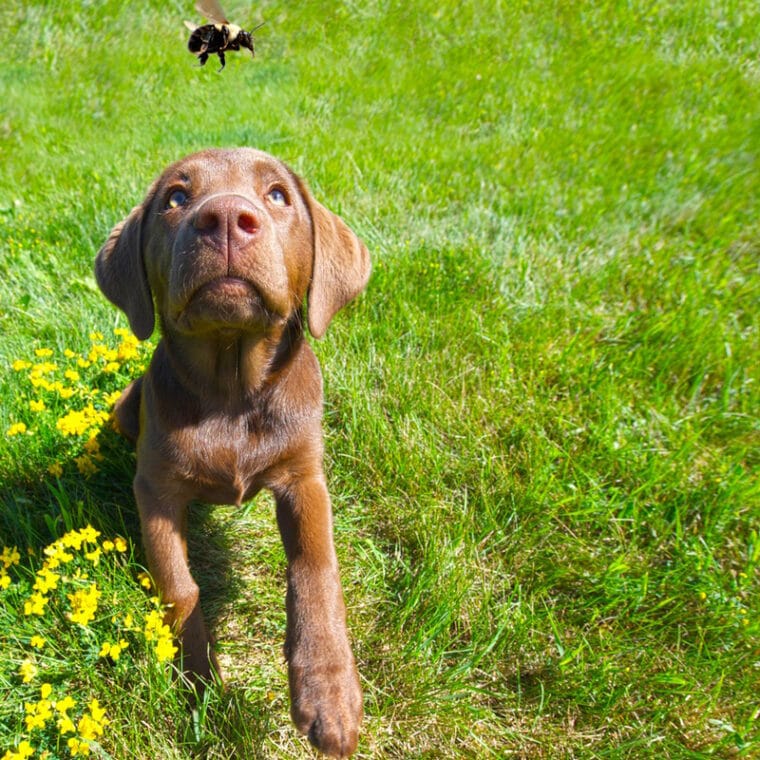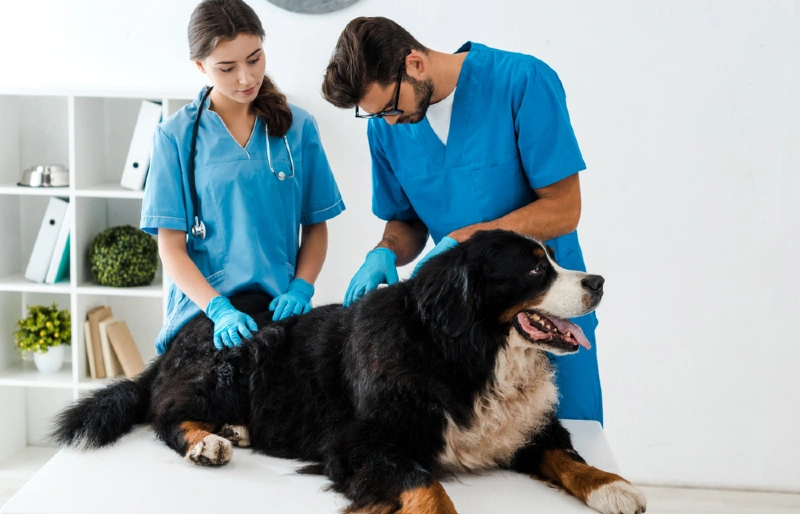
We all know someone who is highly allergic to bees or other insects, and bees are something that many people tend to avoid. But what happens if your pooch ingests a bee? Are they at risk of having a reaction? The answer is yes, it is possible your dog may react poorly if stung. Continue reading to learn more about possible concerns associated with the ingestion of a bee.
Points to Consider
There are several different types of bees worldwide, with roughly 4,000 species in the United States alone. Not all bees sting, and not all bees are highly aggressive. Bees are beneficial to our ecosystem and agriculture, and don’t forget that honey bees provide us with delicious honey to enjoy!
Just like every individual person, each dog has the ability to react differently to a bee sting, depending on their highly complex immune system. It is important to note that not every sting will result in an allergic reaction. After a sting, it is common that the effected person or animal experiences some level of discomfort. This is a normal response that doesn’t automatically constitute an allergic reaction.
A single bee sting is less likely to be problematic than if your pet has endured several stings. Additionally, the location of the sting is also important. A sting that occurs in the back of the mouth or on the tongue is more concerning than a sting that occurs elsewhere on the body. The reason for this is that a sting occurring in the oral cavity may lead to throat swelling and difficulty breathing, which is a medical emergency, even if a true allergic reaction doesn’t occur.

Signs That Your Dog Has Been Stung
If your pet has had a close encounter with a bee or has potentially ingested a bee, the possibility exists that your dog may have been stung in the oral cavity or elsewhere on their body. Signs that suggest your pup may have been stung include:
Signs of Allergic Reaction
It is recommended that you closely monitor your pet for signs of an allergic reaction for at least 24 hours. Typically, most simple allergic reactions involve the skin and have no other systemic effects. Signs vary but may include:

What Is Anaphylactic Shock?
Anaphylaxis is a severe form of an allergic reaction. Patients who experience anaphylaxis from an insect usually start showing signs of a reaction within a few minutes of a sting. Patients with anaphylaxis typically show more than one organ system involvement.
Dogs with anaphylaxis can collapse, experience severe gastrointestinal signs such as vomiting and diarrhea, can develop respiratory depression, and can go into shock. Dogs that develop anaphylaxis typically have elevated liver values and may need extensive veterinary intervention. Dogs that have severe reactions may require steroids, epinephrine, and fluid therapy.
How Do I Care for My Dog?
First off, it is important to remember to stay calm. Your dog will quickly pick up on your anxiety!
If your dog has never been stung by a bee before, it is impossible to know if they will have a negative reaction. Closely monitor for the above signs. You can also call your veterinarian for advice. Depending on your dog and concurrent medical conditions, your veterinarian may recommend giving your pet an antihistamine, like Benadryl, for a few doses. If your pet has been stung previously by a bee and reacted poorly, contact your veterinarian quickly and plan on having your dog evaluated as soon as possible.
Some allergic reactions can occur right away, whereas others may take several hours to develop. Plan on closely monitoring your furry friend for at least 24 hours after the encounter so you can quickly identify any abnormalities.
Check to see if the stinger from the bee remains in your pet. If it does, carefully try to remove the stinger by scraping it out using something like a credit card. Removing the stinger will help improve your companion’s comfort and potentially prevent more toxin exposure. If your pet ate the bee, be sure to look into their mouth if it is safe to do so.

How Can I Prevent My Dog From Being Stung?
It is nearly impossible to completely prevent your pet from being stung, especially if they are active and inquisitive in nature. If your dog has a history of poorly reacting to bee stings in the past, you may want to consider preventing unsupervised visits outside or off the leash adventures.
Having a close eye on your pet allows you to intervene if they get themselves into trouble. Certain times of the day may have more bee activity than others, so care should be taken to avoid those times. And finally, avoid keeping planted or potted flowers near your home, as these attract bees.
In Summary
It is possible that a dog may have endured a sting or two if they have ingested a bee. It is important to closely observe your dog for abnormal reactions and to reach out to your veterinarian for medical advice. Some bee stings can result in local discomfort and irritation, whereas others may result in an exaggerated immune response affecting different organ systems. Severe allergic reactions need emergency attention from a veterinarian.
Featured Image Credit: KellyNelson, Shutterstock






